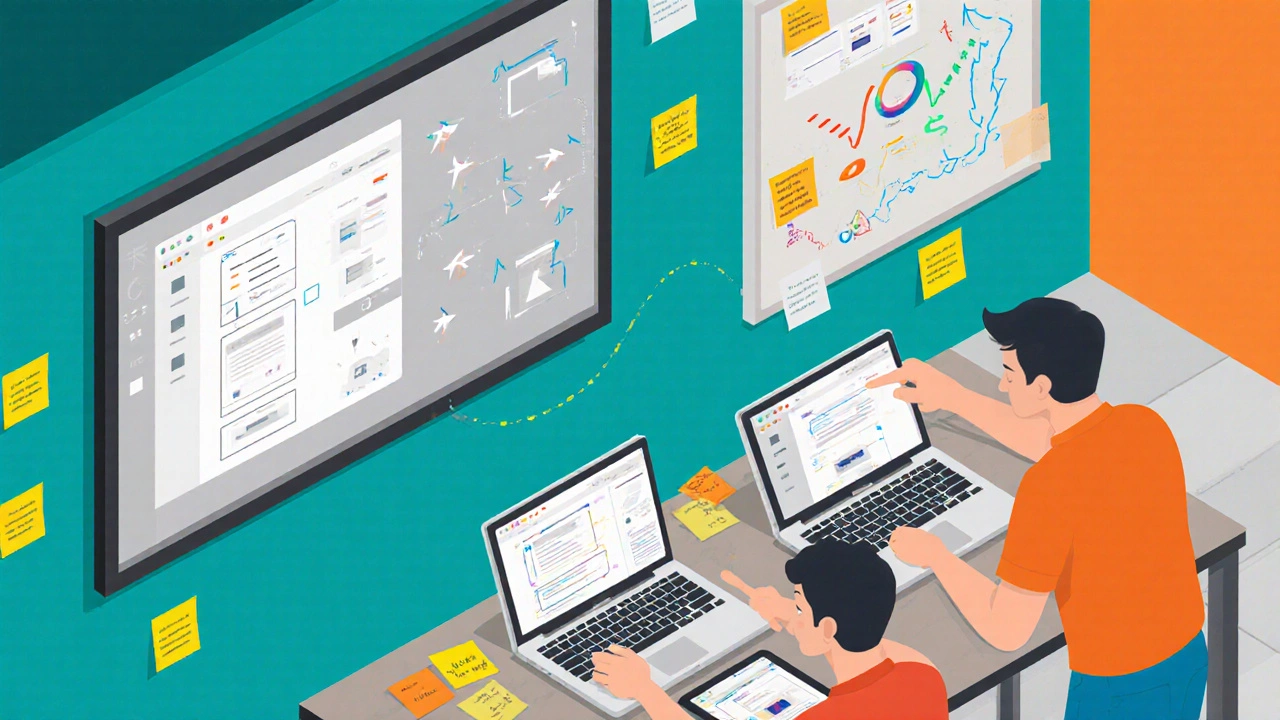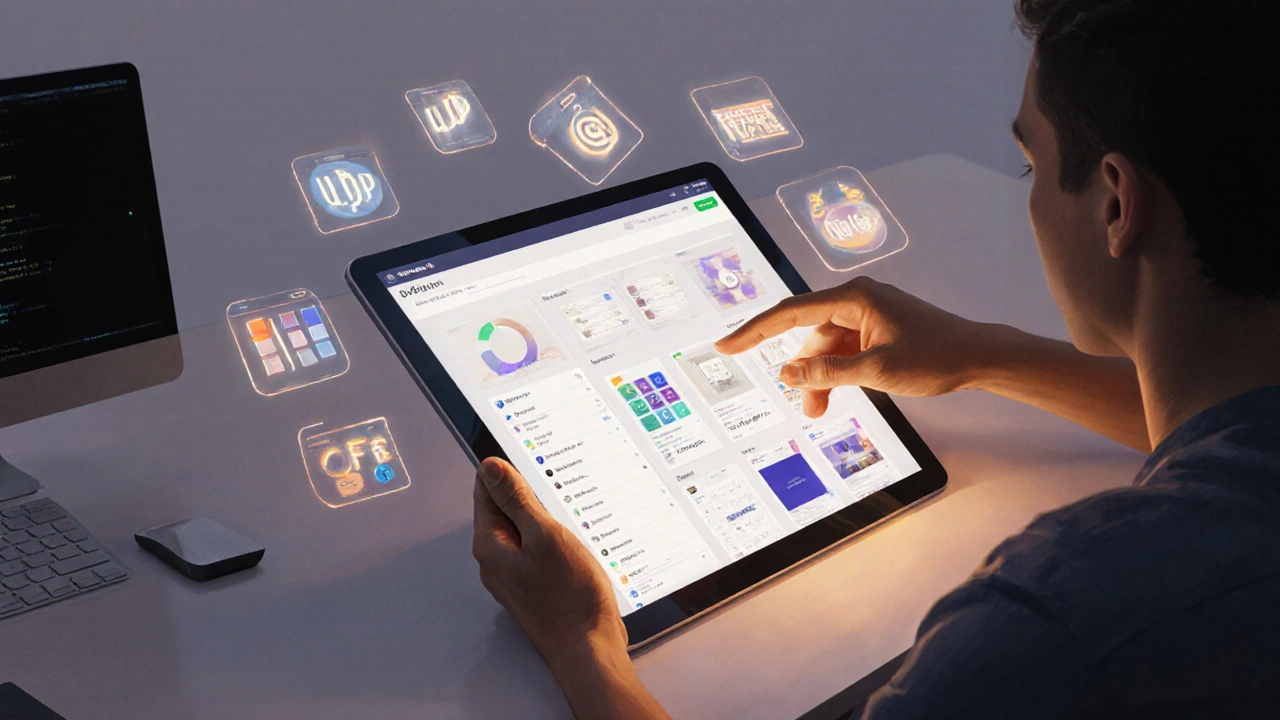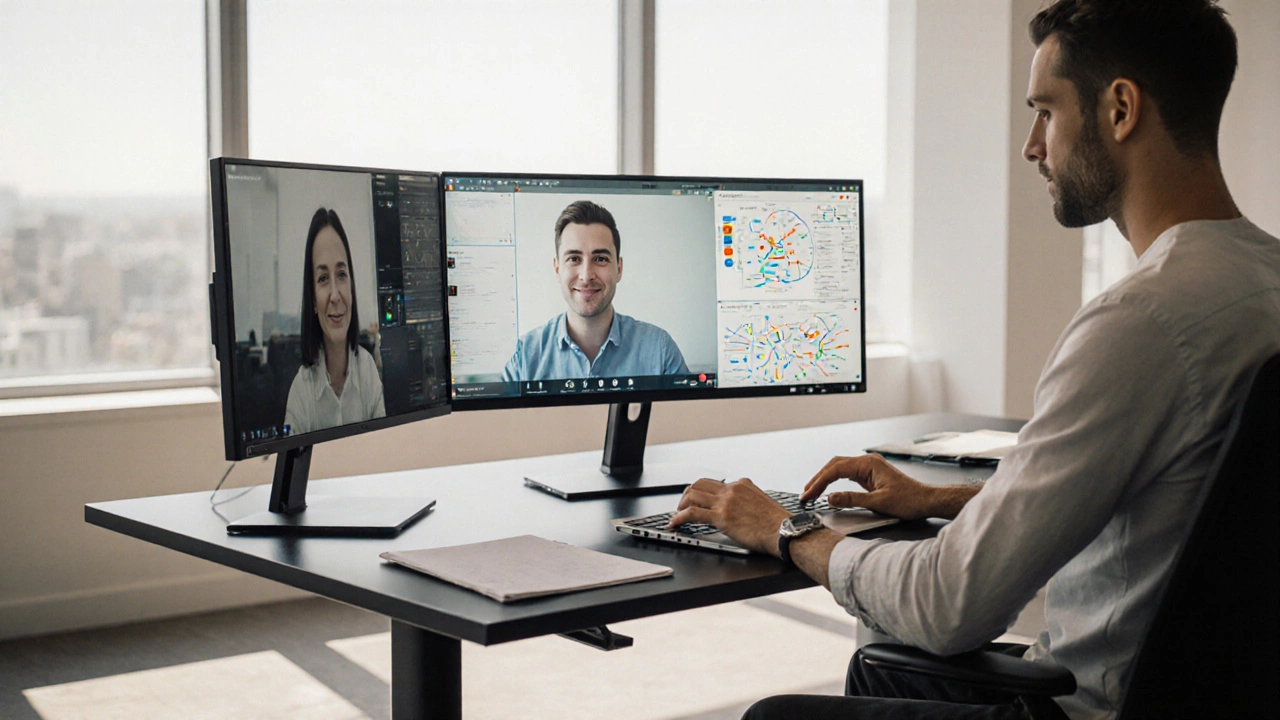UI/UX Design Time Allocation Calculator
Project Time Allocation Calculator
Calculate how to allocate your project time across UI/UX design phases based on industry best practices from the article.
Your Project Allocation
Key Insight from the Article
As mentioned in the article, teams who invest at least 20% of project time in research see a 30% lift in user satisfaction. This tool helps you allocate time according to industry best practices while considering all phases of the design process.
Ever wondered what a UI/UX Designer actually spends their day doing? It’s more than just picking colors or drawing pretty screens. In reality, the role blends research, strategy, and visual storytelling to shape how users feel and act when they interact with a product.
Defining the Role
When people talk about UI/UX designers, they often lump together two distinct skill sets. A UI/UX Designer is a professional who combines user experience (UX) research and strategy with user interface (UI) visual design. This hybrid focus means they look at the big picture of how a product works and the fine details of how it looks.
Core Responsibilities
Every project may vary, but most UI/UX designers handle a set of recurring tasks:
- Understanding user needs through User Research methods such as interviews, surveys, and contextual inquiries.
- Structuring information with Information Architecture the hierarchy and labeling of content.
- Sketching early concepts using Wireframes low‑fidelity blueprints that map out layout and functionality.
- Building interactive Prototypes mid‑to‑high fidelity mockups that simulate user flows.
- Crafting visual elements through Visual Design color, typography, iconography, and imagery.
- Running Usability Testing sessions where real users interact with a prototype and provide feedback to refine the solution.
- Collaborating with developers, product managers, and marketers to ensure the final product aligns with the original vision.
Doing the Research
Good design starts with a solid understanding of the people you’re building for. Designers typically begin by defining personas-fictional characters representing key user groups. They then dive into User Research to collect qualitative and quantitative insights. For example, a 2024 Nielsen Norman Group study showed that teams who invest at least 20% of project time in research see a 30% lift in user satisfaction.
Tools like Figma a cloud‑based design and prototyping platform and Adobe XD Adobe’s vector‑based UI/UX design tool help centralize research findings, notes, and artifacts in one place.
From Sketch to Wireframe
Once the problem space is clear, designers move to ideation. Quick sketches on paper or a tablet capture the essence of ideas without getting bogged down in details. Then they translate those sketches into Wireframes simple layouts that outline placement of elements and navigation flow. Wireframes serve as a communication bridge between designers and developers, ensuring everyone agrees on the structure before visual polish begins.
A common pitfall is over‑designing at this stage. Remember, the goal is to solve user problems, not to showcase graphic flair. Keep the focus on functionality, hierarchy, and user flow.

Prototyping for Interaction
After wireframes, designers create Prototypes interactive models that mimic real‑world usage. Low‑fidelity prototypes might be click‑through PDFs, while high‑fidelity ones can include animations, transitions, and realistic data.
Prototyping allows designers to test assumptions early. For instance, a fintech startup in 2023 found that a simple swipe‑to‑confirm gesture confused 45% of users during a prototype test, prompting a redesign before any code was written.
Visual Design and Branding
With the interaction flow solidified, the visual design phase begins. This is where Visual Design the craft of choosing colors, typography, icons, and imagery comes into play. Designers often reference brand guidelines to ensure consistency across screens.
Design systems-living libraries of reusable components-are integral here. A well‑maintained design system reduces redundancy and speeds up hand‑off to developers. Companies like Google with Material Design and IBM with Carbon illustrate how a robust system can scale across products.
Testing and Iteration
Even the most polished visuals can fail if they don’t meet user expectations. Usability Testing sessions where participants complete tasks while designers observe and note friction points uncovers those gaps.
Typical metrics include task success rate, time on task, and error frequency. A 2022 case study from a SaaS platform reported a 22% drop in support tickets after iterating based on usability test findings.
Designers iterate based on the data: refine flows, tweak visual hierarchy, or simplify interactions. This loop-test, learn, adjust-often repeats several times before launch.

Collaboration and Handoff
UI/UX designers don't work in a vacuum. They liaise with product managers to align on business goals, with developers to ensure feasibility, and with marketers to maintain brand voice. Effective collaboration tools-Slack for communication, JIRA for task tracking, and version‑controlled design files in Figma-keep everyone on the same page.
When the design is ready, designers hand off specifications using tools like Zeplin or Figma’s Inspect mode, providing developers with CSS values, asset sizes, and interaction details. Clear documentation reduces back‑and‑forth and speeds up implementation.
Career Path and Skill Development
Breaking into UI/UX design usually starts with a portfolio that showcases end‑to‑end projects: research, wireframes, prototypes, and final visuals. Employers look for evidence of problem‑solving, empathy, and a solid grasp of design principles.
Key skills include:
- Empathy and user‑centered thinking
- Proficiency in design tools (Figma, Adobe XD)
- Understanding of front‑end basics (HTML, CSS, basic JavaScript) to communicate with developers
- Analytical mindset for interpreting research data
- Ability to create and maintain design systems
Continuous learning matters. The design landscape evolves with new interaction paradigms-voice UI, augmented reality, and micro‑interactions-so staying updated through conferences, online courses, and community meetups is essential.
Bottom Line
UI/UX designers are the bridges between users, business goals, and technology. Their daily grind ranges from digging into user psyches to polishing pixel‑perfect screens, all while talking the same language as developers and stakeholders. Understanding this blend of research, strategy, and visual craft helps anyone considering a design career-or anyone hiring a designer-make smarter decisions.
Frequently Asked Questions
What is the difference between UI and UX design?
UX design focuses on how a product works and the overall experience, while UI design deals with the look, feel, and visual elements of the interface. Both are vital, and many designers handle both aspects, which is why the role is often called UI/UX designer.
Do I need to know how to code to be a UI/UX designer?
Coding isn’t mandatory, but understanding HTML, CSS, and basic JavaScript helps you communicate with developers and design realistic solutions.
How much time should I spend on user research?
A good rule of thumb is to allocate 20‑30% of a project’s timeline to research. Skipping this step often leads to redesigns later, costing more time and money.
What tools are most commonly used by UI/UX designers?
Figma and Adobe XD dominate for design and prototyping, while tools like Miro aid in brainstorming, and UserTesting.com helps with remote usability testing.
Can a UI/UX designer work remotely?
Absolutely. The digital nature of the work, combined with cloud‑based tools, makes remote collaboration common and often very productive.
